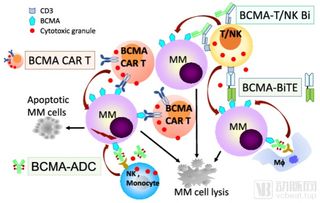Understanding Bruton’s X-Linked Agammaglobulinemia

Bruton’s X-linked agammaglobulinemia, also known as Bruton’s disease, is a rare genetic disorder that affects the immune system. It is primarily characterized by a severe deficiency in immunoglobulins, which are proteins that play a crucial role in protecting the body against infections. This condition is more common in males, as it is an X-linked recessive disorder.
Causes and Genetics

Bruton’s X-linked agammaglobulinemia is caused by mutations in the BTK (Bruton’s tyrosine kinase) gene, which is located on the X chromosome. This gene is responsible for the production of B cells, a type of white blood cell that produces immunoglobulins. When the BTK gene is mutated, B cells do not develop properly, leading to a deficiency in immunoglobulins.
Since the disorder is X-linked recessive, males are more commonly affected because they have only one X chromosome. Females, on the other hand, have two X chromosomes, so even if one of them carries the mutated gene, the other normal X chromosome can compensate for the deficiency. However, females can still be carriers of the disorder and pass it on to their offspring.
Symptoms and Diagnosis

Bruton’s X-linked agammaglobulinemia typically presents in early childhood, usually between the ages of 6 months and 2 years. The most common symptoms include frequent and severe infections, such as pneumonia, bronchitis, otitis media, and sinusitis. These infections can be difficult to treat and may lead to complications.
Other symptoms may include failure to thrive, chronic diarrhea, and eczema. Diagnosis of Bruton’s X-linked agammaglobulinemia is usually based on clinical symptoms, family history, and laboratory tests. Blood tests can measure the levels of immunoglobulins, such as IgG, IgA, and IgM, and identify the deficiency.
Treatment and Management
There is no cure for Bruton’s X-linked agammaglobulinemia, but the condition can be effectively managed with regular immunoglobulin replacement therapy. This therapy involves injecting immunoglobulins derived from human plasma into the patient’s bloodstream to replace the missing proteins.
Immunoglobulin replacement therapy is typically administered intravenously every 2 to 4 weeks, depending on the severity of the disease. In some cases, subcutaneous injection may be used, which involves injecting the immunoglobulins just under the skin. This therapy helps prevent infections and improve the quality of life for patients with Bruton’s X-linked agammaglobulinemia.
Other treatments may include antibiotics to prevent and treat infections, as well as other supportive measures, such as vaccinations and dietary adjustments. Regular monitoring and follow-up with a healthcare provider are essential to manage the condition effectively.
Prognosis and Long-term Outlook
The prognosis for individuals with Bruton’s X-linked agammaglobulinemia varies depending on the severity of the disease and the effectiveness of treatment. With proper management, most patients can lead relatively normal lives and have a good prognosis.
However, complications from frequent and severe infections can occur, such as chronic lung disease, kidney damage, and hearing loss. Early diagnosis and treatment can help minimize these risks and improve the long-term outlook for individuals with Bruton’s X-linked agammaglobulinemia.
Support and Resources
Bruton’s X-linked agammaglobulinemia can be a challenging condition for both patients and their families. Support groups and resources are available to help individuals and families cope with the disorder. These resources can provide information, emotional support, and practical advice for managing the condition.
Some organizations that offer support and resources for individuals with Bruton’s X-linked agammaglobulinemia include the Immune Deficiency Foundation (IDF) and the National Organization for Rare Disorders (NORD). These organizations can provide information on treatment options, clinical trials, and support groups in your area.
| Support Organizations | Description |
|---|---|
| Immune Deficiency Foundation (IDF) | Provides information, resources, and support for individuals with primary immunodeficiency diseases, including Bruton’s X-linked agammaglobulinemia. |
| National Organization for Rare Disorders (NORD) |


















